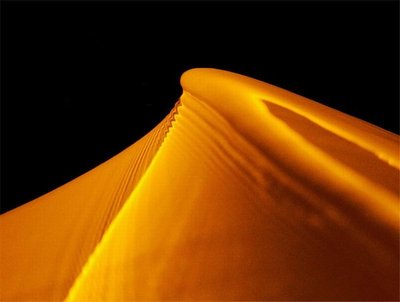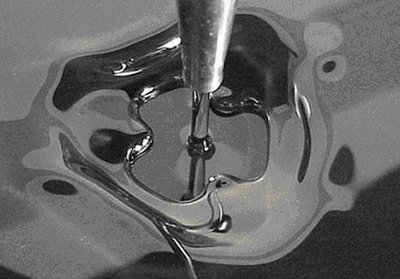November 9, 2004
Researchers to gather in Seattle for international meeting on fluid dynamics
More than a thousand scientists and engineers from around the world will gather in Seattle later this month to exchange ideas and discuss some of the latest work in such hot research areas as climate change, cardiovascular disease and the development of tiny devices fractions of a millimeter in size.
The occasion is the 57th Annual Meeting of the American Physical Society’s Division of Fluid Dynamics, scheduled for Nov. 21-23 at the Westin Hotel in downtown Seattle. The meeting is being co-chaired by Jim Riley, professor of mechanical engineering at the University of Washington, and Peter Schmid, UW professor of applied mathematics.
The event will bring together an exceptionally wide spectrum of experts in the field, according to Riley.
“The topics at this particular conference tend to be very wide-ranging — fluid dynamics involves so many different disciplines,” he said. “The presentations will cover research ranging from studies on climate change, new topics in aerodynamics, and biological phenomena to improved methods of energy generation. There are often similarities in seemingly unconnected fields. For example, when you look at it from a flow dynamics perspective, a volcanic eruption — like from Mount St. Helens — looks very much like the outflow from a jet engine.”
More than 1,150 presentations are scheduled. Topics range from the very big — large-scale flows that involve weather systems and global climate change — to the very small — flows in channels and pumps less than a millimeter in size. Areas covered include:
- The flow of blood in blood vessels, including the effects of aneurysms and artheriosclerosis. Study of blood flow plays a central role in designing heart valves and stents, or mesh tubes placed in arteries to keep them open.
- More efficient and less polluting combustion techniques for fossil fuels.
- Animal locomotion, such as bird and insect flight or swimming micro-organisms, and optimal techniques for competitive swimming.
- New modeling techniques to simulate weather patterns and current flows on the Earth’s surface.
- Simulations of volcanic eruptions and blast waves, an area receiving renewed regional interest with the recent activity at Mount St. Helens.
- Flapping-motion flight and hovering of birds and insects that might provide clues to improve the propulsion of unmanned micro-aircraft and underwater vehicles.
- Micro- and nano-fluid dynamics, which hold the promise of revolutionizing manufacturing processes in the medicine, materials and aerospace industries.
- Fluid dynamics and sniffing, with emphasis on the design of “electronic noses” that could sense explosives, chemical warfare agents and medical problems.
Organizers are incorporating art as well as science into the gathering with the Gallery of Fluid Motion, a display of still images, computer graphics and video clips submitted by participants. Entries will be judged for artistic content, originality and the ability to convey technical information, and winners will be recognized during the meeting. The gallery will be open to the public for the duration of the conference.
###
For more information, contact Riley at (206) 543-5347 or rileyj@u.washington.edu, or Schmid at (206) 685-2971 or pjs@amath.washington.edu.
The official conference Web site is at http://depts.washington.edu/apsdfd04/index.html
A list of presentations, with abstracts, can be found at http://www.aps.org/meet/DFD04/baps/. Click on “epitome” for a chronological list of the sessions, then on each presentation for a brief abstract.




